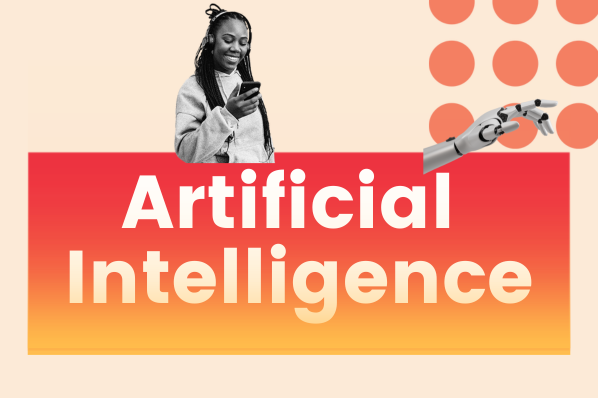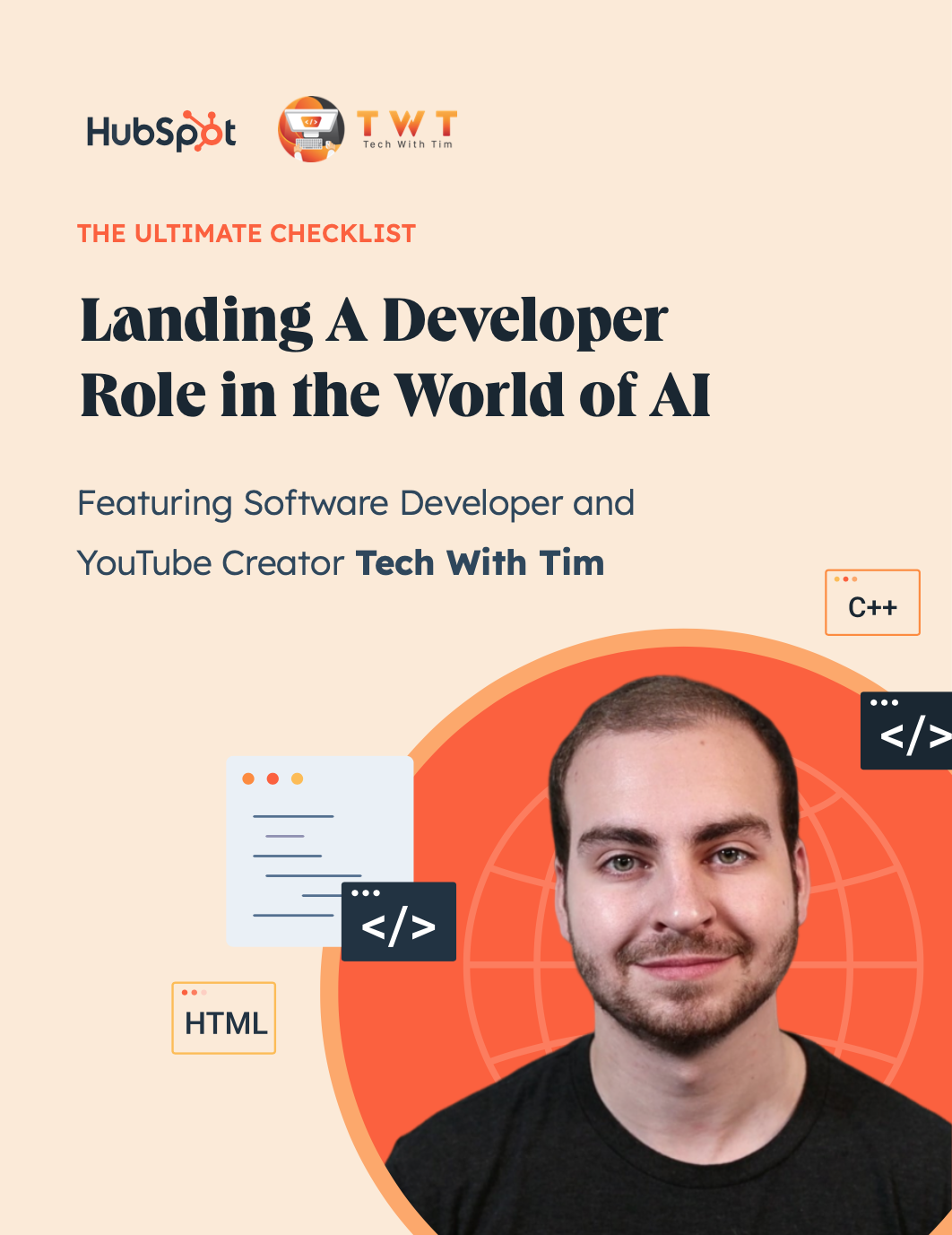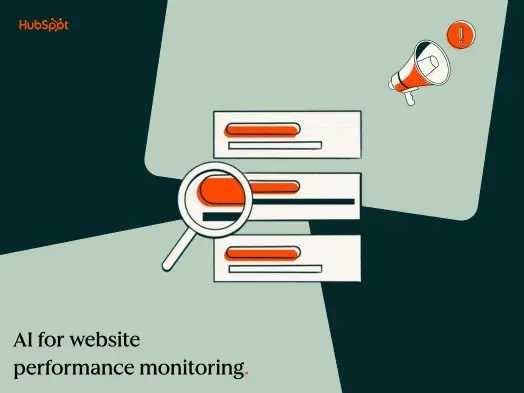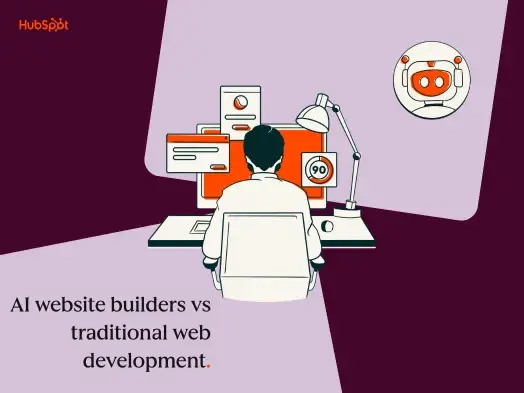Table of Contents
- Understanding Generative AI Prompts
- Top 17 Generative AI Prompts
- How AI is Transforming Web Design and Development
Understanding Generative AI Prompts: The Game Changers
As web designers and developers, our toolkit is continuously expanding. Among the latest additions, Generative AI prompts stand out, promising to revolutionize our workflow and creative process.
So, what exactly are Generative AI prompts?
Simply put, they are suggestions or outputs produced by artificial intelligence based on patterns and data it has been trained on. These prompts can range from design recommendations to code snippets, all tailored to specific inputs or questions you provide.
But why are they becoming a buzzword in web design and development?
The value of these prompts lies in their ability to streamline our processes. Stuck on a design element? An AI prompt might suggest a layout tweak or color adjustment. Having trouble with a piece of code? The AI can recommend a fix or even generate the necessary snippet. It's like having an expert colleague on standby, ready to assist whenever you hit a roadblock.
The adaptability of these prompts is another standout feature. They're not just generic suggestions; based on the input, they can provide specific, tailored recommendations that fit the exact needs of your project.
With this foundation set, let's delve into the top AI prompts that every web designer and developer should consider integrating into their workflow.
Top 17 Generative AI Prompts Every Web Professional Should Bookmark
Navigating through web design and development can sometimes leave us feeling adrift. Thankfully, AI prompts act as guiding stars, lighting up the path toward innovative solutions. Here are 17 AI prompts that have made waves in the industry, backed by their practical applications.
1. Dynamic UI Elements Generator
Prompt: “Design a dynamic UI layout for a mobile e-commerce site targeting young adults.”
A Real-world Application:
Imagine being tasked with creating an e-commerce platform for a trendy fashion brand targeting Gen Z. By leveraging this prompt, designers can receive an initial layout that incorporates elements like integrated social media sharing options, bold graphics, and swipe-friendly image galleries. This not only speeds up the design process but also ensures the final product resonates with its intended audience.
2. Automated CSS Grid Layout
Prompt: “Create a CSS grid layout optimized for a three-column news website for tablet and desktop views.”
A Real-world Application:
Suppose you‘re building a news portal aimed at delivering quick updates to professionals on the go. Using this prompt, developers can quickly derive a layout that prioritizes clear headlines, easy navigation, and a dedicated space for featured news. This ensures readers can quickly skim through the day’s top stories during their busy schedules, enhancing user retention.
3. Personalized User Experience Ideas
Prompt: “Suggest user experience improvements for a personal blog to encourage returning visitors.”
A Real-world Application:
Consider a travel blogger trying to grow their readership. By applying this prompt, they could receive suggestions like incorporating a “Save for Later” button, tailoring content based on past reads, or even a widget highlighting their most popular adventures. These personalized elements can make visitors feel valued, increasing the chances they'll return for more tales from the road.
4. Interactive Animation Concepts
Prompt: “Recommend engaging animations for a landing page's primary call-to-action button.”
A Real-world Application:
Picture a startup launching an innovative fitness app and wanting to draw attention to their sign-up button. Using this prompt, designers could be guided towards animations showcasing pulsating effects or a running silhouette, subtly emphasizing the app's fitness theme and urging visitors to take action.
5. Real-Time Content Optimization
Prompt: “Optimize this article content for improved readability and user engagement.”
A Real-world Application:
Imagine an educational platform offering articles on complex scientific topics. By utilizing this prompt, content creators can receive recommendations on breaking down complex jargon, including engaging visuals, or adding interactive quizzes, making the content more accessible and engaging for learners of all levels.
Sign Up to Try HubSpot's AI Tools
6. AI-Powered Image Enhancement
Prompt: “Enhance these product images for a web gallery, focusing on sharpness and color balance.”
A Real-world Application:
Envision an artisanal crafts shop looking to showcase its handcrafted products online. By inputting this prompt, they can obtain AI-assisted image enhancements that highlight the intricate details, ensure true-to-life color reproduction, and present every item in its full glory. This not only makes the products more appealing to potential buyers but also conveys the craftsmanship and quality inherent in every piece.
7. Smart Form Design Recommendations
Prompt: “Suggest intuitive form design elements for a multi-step event registration process.”
A Real-world Application:
Consider an organization hosting a large-scale virtual conference. With attendees from around the world, the registration process needs to be smooth, efficient, and user-friendly. By applying this prompt, organizers can obtain AI-generated design recommendations such as progressive form layouts, real-time field validations, and visually appealing UI elements that guide attendees through each step, ensuring a hassle-free registration experience.
.png?width=598&height=398&name=My%20Featured%20Image%20Template%20Backgrounds%20(4).png)
8. Navigation Structure Optimization
Prompt: “Optimize the navigation structure for an online bookstore with multiple genres and author categories.”
A Real-world Application:
Picture a budding online bookstore aiming to rival the giants in the industry. Given the vast array of genres, authors, and titles, a well-structured navigation is paramount. By deploying this prompt, the web developers can receive AI-backed suggestions for intuitive menu hierarchies, breadcrumb trails, and filter options. This ensures that book enthusiasts can easily dive into their favorite sections, discover new reads, and most importantly, enjoy a frictionless browsing experience.
9. Content Personalization Insights
Prompt: “Provide content tailoring recommendations for a sports merchandise website based on user browsing behavior.”
A Real-world Application:
Visualize an online sports merchandise retailer aiming to elevate its user experience by offering personalized product suggestions. By leveraging this prompt, the platform can receive insights on showcasing merchandise relevant to a user's past interactions, be it their favorite sports team, athlete, or even specific events. This ensures that fans are presented with items that resonate with their passions, fostering increased engagement and potential purchases.
10. Accessibility Improvement Solutions
Prompt: “Suggest web design modifications to ensure the site meets WCAG 2.1 accessibility standards.”
A Real-world Application:
Imagine an educational institution's website aiming to cater to a diverse audience, including those with disabilities. By using this prompt, web designers can garner AI-driven recommendations on elements like color contrast ratios, keyboard navigability, and screen reader optimizations. This not only ensures compliance with global accessibility standards but also promotes an inclusive web experience for all users, regardless of their abilities.
11. Color Palette Innovations
Prompt: “Generate a color palette inspired by autumn foliage for a lifestyle blog.”
A Real-world Application:
Consider a lifestyle blogger planning a content series around fall activities, fashion, and recipes. With this prompt, they can receive an AI-crafted color palette that mirrors the warm hues of autumn – burnt oranges, deep reds, and golden yellows. Incorporating these shades into their blog design can create a cozy, thematic atmosphere, resonating perfectly with their fall-centric content and enticing readers to dive deeper into their autumnal adventures.
12. Typography Pairing Ideas
Prompt: “Suggest a harmonious typography pairing for a minimalist portfolio website for a freelance photographer.”
A Real-world Application:
Visualize a freelance photographer eager to showcase their work through a sleek, minimalist portfolio. Using this prompt, they can obtain AI-recommended font pairings that strike the right balance between elegance and readability. By implementing these typographical choices, the photographer ensures that while their images remain the focal point, the accompanying text is presented in a manner that complements their work and maintains the website's overall aesthetic harmony.
13. Responsive Design Adjustments
Prompt: “Modify this web design to ensure seamless viewing across mobile, tablet, and desktop devices, prioritizing content hierarchy.”
A Real-world Application:
Envision a digital art gallery aiming to reach art enthusiasts irrespective of the device they use. With this prompt, developers and designers can acquire AI-guided solutions to tweak layout grids, resize images proportionally, and ensure textual content is legible across varying screen sizes. As a result, visitors can immerse themselves in the artworks and artist narratives without any design disruptions, ensuring a consistent and captivating user experience.
14. React Component Generator
Prompt: “Construct a React component for a user feedback form with error handling.”
A Real-world Application:
Imagine a SaaS platform wanting to gather user feedback for continuous improvement. By using this prompt, developers can swiftly create a component with fields for user feedback, equipped with error handling for ensuring valid input, thus making the process seamless for users.
15. Code Solution Generator
Prompt: “Provide a JavaScript solution to create a dynamic countdown timer for an upcoming product launch event.”
A Real-world Application:
Imagine a tech company gearing up for a major product reveal, and they want to build anticipation among their audience. By inputting this prompt, developers can obtain an AI-generated JavaScript code snippet to embed a dynamic countdown timer on their website. This real-time ticking clock not only heightens the sense of anticipation but also serves as a reminder for the audience, ensuring they don't miss out on the big reveal.
16. Python Automation Ideas
Prompt: “Provide a Python script to automate monthly report generation from given datasets.”
A Real-world Application:
Consider a financial institution that needs to generate monthly reports from vast datasets. By leveraging this prompt, they can automate this repetitive task, ensuring accuracy and saving considerable time.
Sign Up to Try HubSpot's AI Tools
17. API Integration Assistance
Prompt: “Generate a code snippet to integrate a third-party weather API with a travel app.”
A Real-world Application:
For a travel application aiming to provide real-time weather updates for chosen destinations, this prompt can help developers seamlessly integrate third-party weather information, enhancing user experience by providing vital information.
Bridging Creativity: How AI is Transforming Web Design and Development
The convergence of AI and web design/development has ushered in a new era of creativity, efficiency, and innovation. Through the power of AI prompts, professionals in the digital realm are armed with a unique toolkit, enabling them to overcome creative roadblocks, refine their craft, and stay ahead in an ever-evolving industry.
As we‘ve explored, these prompts span a vast spectrum, from visual design nuances to complex coding solutions. The key lies in harnessing these prompts effectively, tailoring them to specific needs, and letting the blend of machine intelligence and human creativity chart the way forward. As the digital landscape continues to expand, the synergy between AI and web professionals will undoubtedly redefine the horizons of what’s possible. So, bookmark these prompts, dive into the uncharted, and let's co-create the future of the web.
Artificial Intelligence













